

New Markets for Artists
March through June, 2009
Community Development Partnership
Conference Room,
Main Street Mercantile Plaza in Eastham
The New Markets for Artists Workshop offers Cape artists and artisans the opportunity to develop viable marketing strategies, press packages and action plans. Co-facilitated by prominent artist and RISD professor, Oren Sherman and business consultant, Rick Miller, participants will learn a variety of marketing skills and personal development tools for creating a marketing strategy that increases earning potential and provides greater financial stability. Participants will receive 20 hours of intensive skill building designed to hone and expand their art business.
Once Monthly - March through June (dates TBD)
Sliding scale fee for this course.
For complete program details and to register, contact Lisa at 508-240-7873 x25 or lisa@capecdp.org.
______________________________________________
Vera Lynne Champlin
We are grateful to Vera Lynne Champlin for allowing us to use her beautiful images of flowers in this issue of the magazine. Vera is a watercolor painter best known for paintings of flowers, still lifes and gardens. Her grandmother, Helen Hussey Champlin, through garden club work, made flowers central to her life, and influenced Vera’s idea of beauty. Drawing from this legacy, Vera continues the celebration of flowers through her paintings.
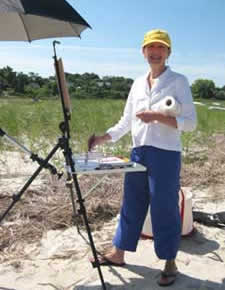
Vera graduated with a B.F.A. in painting and graphics from the University of New Hampshire in 1972. After graduation, she moved to Cape Cod and her art took a different direction when she fell in love with dance. For the next 7 years, she immersed herself in many forms, including Spanish and East Indian with the celebrated artist Madame La Meri. Realizing that a professional career in dance was out of her reach she, with her husband Peter Scannell, created Chatham Cookware, a cookware store and bakery on Main Street in Chatham. There, the focus of her art became baking and pastry making. Over the next 18 years, Vera and Peter grew the business into a much-loved destination spot for many people near and far, because of the superlative food and charm of the store. In 1998, they sold the store and Vera returned to painting.
In 2004, Vera’s painting, Daffodils was selected to appear in How Did You Paint That? 100 Ways to Paint Your Favorite Subjects, published by International Artist Publishing.
Vera lives in Chatham with her husband Peter and their two children, Nell and Waldo. She loves her gardens and still takes ballet class regularly.
She says, "I am always looking for that combination of things that moves me in a painting, that mix that speaks to the senses. I try to capture it in the right balance of light and shadow, precision and suggestion; all the while I seek to honor the medium itself: the luminosity, freshness, and priceless bloom."
www.addisonart.com
______________________________________________
CapeWomenOnline.com
P. O. Box 720, North Eastham, Cape Cod, MA 02651
Telephone: (508) 255-5084
© Copyright 2009 CapeWomenOnline
All rights reserved
Harwich Artist’s
“Icons of the Civil Rights Movement”
Displayed
in Washington, DC
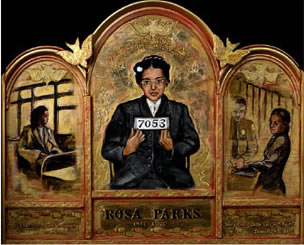
Harwich resident Pamela Chatterton-Purdy has always been passionate about issues of racial equality. Her first job after graduating from the University of New Hampshire in 1963 was as an art director for Ebony magazine in Chicago. It was here that she had the opportunity to experience life as an ethnic minority during the working day as one of only two white employees in a staff of 150 African-Americans. Soon after, the bombing of the 16th Street Baptist Church in Birmingham, AL, that resulted in the deaths of four young African-American girls, rocked the black community and ignited Purdy’s passionate support of civil rights. “In a sense you become black because you’ve lived through that experience . . . I became so involved with the racism my friends were always facing that it was clear that I was a person of ‘white privilege,’ ” she explains.
Purdy had what she describes as a “lily-white upbringing” in Connecticut, but she learned more about racism after she and her husband, a Methodist minister, adopted their two sons, one African-American and one of mixed Vietnamese and African-American ethnicity, to join their family of two daughters. “The kind of racism that we ran into after adopting black kids was shocking,” she said. “The experience of feeling black has to do with Black Rage, rage at the racism my boys experienced over and over. One day we were walking down the street in Middleboro, MA. We are not talking Mississippi! The boys were walking ahead of us. An old man was coming toward us. He pushed one of the boys into the street saying, ‘Out of my way, nigger.’ Another time we went out to dinner at a Chinese restaurant in Rockland, MA. The boys went down to the bathroom and came upstairs crying and terrified. They were five and seven years old! A white man in the bathroom told them, “shit niggers and get out of here.” David had to deal with that man. All four of our kids were so upset!”
In 2004, she and her husband traveled south on a Civil Rights sojourn with a group of high school students on a tour of historically significant sites of the Civil Rights Movement. She had already conceived of the idea of creating a series of paintings honoring individuals involved in the Movement, and she was inspired by visiting the places where so many historic events had taken place.
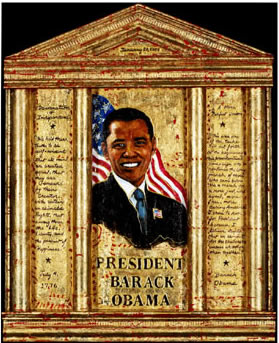
At the time, Purdy was taking care of her aged mother in her home. When her beloved mother died at the age of 96, in 2007, she finally had the time to begin work on the icons. She completed the first 16 paintings in just three-and-a-half months, starting work in her studio at 6 a.m. and working all day. She wanted to get them finished for the 40th anniversary of the assassination of Dr. Martin Luther King, in 2008.
“I finished the 16th icon the morning of January 19, MLK Day, and rushed them up to the MLK celebration at St. Joan of Arc Church in Orleans. The Guild of Harwich Artists was next, and then they went to the State House. The icons traveled to so many places after that. The list of where they have been is shown in on my web-site,” she said.
To make each icon unique, she designed a different shape for each piece, some resembling Russian icons, some like headstones, and her husband helped her to cut and assemble the shapes. She covered them with painted portraits, gold leaf, collage, and found objects, and embellished the shapes with picture frame molding. She added visual symbols and words, often scriptural quotes, that reflected each individual’s character and circumstance. The results are striking, each one a richly textured and exquisitely rendered work of art honoring “ordinary people who did extraordinary things,” as she puts it.
Continued in next colunm . . .
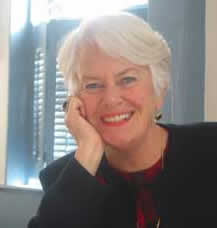
Pamela Chatterton-Purdy
Creativity Catalysts
by Gail McMeekin
We know we are creative beings. Yet we are also well aware that sometimes our creativity stalls, plays tricks on us, or appears to have vanished completely.
It is at these moments that we need to reconnect with our vitality around our creative process or project and leverage our inspirational powers to stimulate our ability to make new connections.
The following tips are meant to arouse your natural creative gifts so you can surmount those obstacles in your journey and achieve maximum potential.
Have fun with them and enjoy the wonder of discovery as you expand your imagination and allow yourself to be a conduit for excellent work!
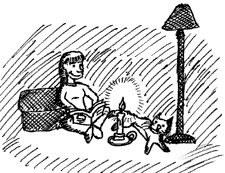
Illustration by Sebastian Francis-Burnell
1. Keep a daily excitement list about why you are passionate and committed to your creative project or exploration.
2. Visualize your end result and make a collage of images that support that vision and post it where you can see it regularly.
3. Take a field trip relating to your project to explore a particular facet of it.
4. Experience your project using the three learning styles of visual, auditory, and kinesthetic experiences:
a.) Draw a picture of it, make a mind-map of it, or take a photo of it and play with it on photo-shop.
b.) Talk about your project into a tape or video recorder or teach a real or pretend class on the topic to an audience or to your friends.
c) Act it out with props and maybe with other characters.
5. Record and follow your intuitive clues relating to your project.
6. Go to a toy store and select a toy that reminds you of your project and let your inner child play with it.
7. Set up a series of experiments related to your project with hypotheses to test out.
8. Exercise regularly to clear your head.
9. Find someone who is an opposite thinker (a devil’s advocate) from you, tell them about your project, and let them challenge/stimulate your thinking.
10. Select inspiring music that resonates with your project and play it at the beginning of your work time.
11. Create a water experience to increase your flow of ideas—sit in a hot-tub, go swimming, take a shower, visit a spa, or take a walk on the beach.
12. Take your project away with you as a companion and see how it changes in a new setting.
13. Meditate or pray about your topic.
14. Find a symbol of your creative process and keep it close by when you are working or contemplating.
15. Initiate creative rituals, such as lighting a candle or reading a specific passage, to invite your muse into the process.
16. Look at visual representations relating to your project, such as paintings and images, special destinations, and specific scenes.
17. Send your inner critic to a foreign land so you feel free to make mistakes and cast about for new connections.
18. Change your location—work on your project in bed, outside in nature, in a museum, or simply change rooms.
19. Take a day or two off so you can take a fresh look at your project when you return.
20. Keep a file card packet in your office, car, etc. to jot down all related ideas and thoughts, even if their meaning is a mystery.
21. Read related books and articles, etc. and take notes to jog your inspirations.
22. Look for the metaphors—i.e., how is your project like a pine tree or a trolley car?
23. Keep a separate journal or computer file for each project and keep track of new impressions.
24. At the right time, share your project with trusted others and gather new insights.
25. Take creative risks using your fascinations as a guide to unique explorations.
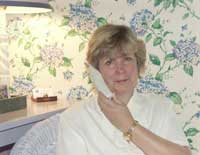
Gail McMeekin LICSW is a creative life choices consultant and the author of The 12 Secrets of Highly Creative Women and The Power of Positive Choices, both with Conari Press. She writes a monthly email newsletter Creative Success available at her website and she runs ongoing teleclasses on creativity and fulfillment.
www.creativesuccess.com
__________________________________________________
Civil Rights Icons continued:
The original series of icons was on exhibit at the Methodist Center in Washington, DC, for the month of January, and has moved to the Frederick Douglas Museum, DC, for the month of February. Locally, the images can be seen in an exhibition of giclee prints on permanent display at the Zion Union Heritage Museum in Hyannis. When asked about Barack Obama, Purdy says, “My feeling is that he is the metaphorical resurrection of the Civil Rights Movement. People did not die in vain. We are now, I think, heading into full brotherhood, and I’m just so thrilled and excited about it.”
Images shown: "Rosa Parks" (top) and "Obama"
by Pamela Chatterton-Purdy
www.chatterton-purdyart.com